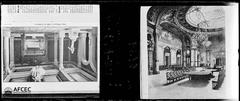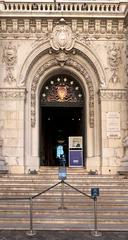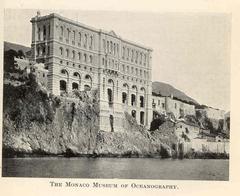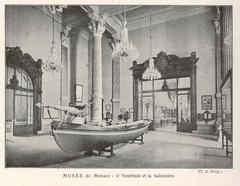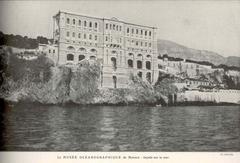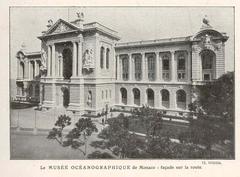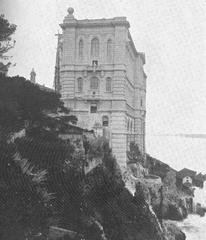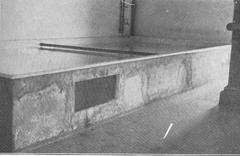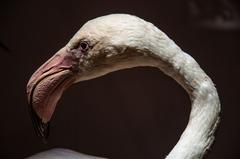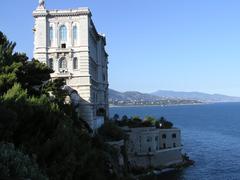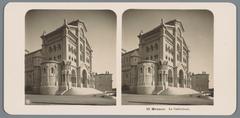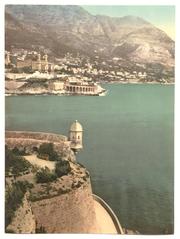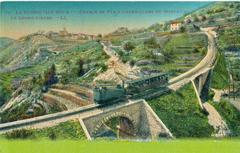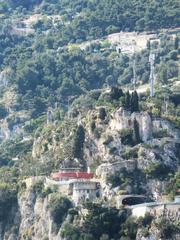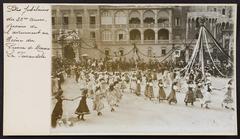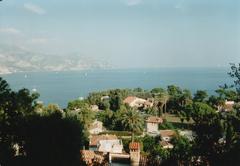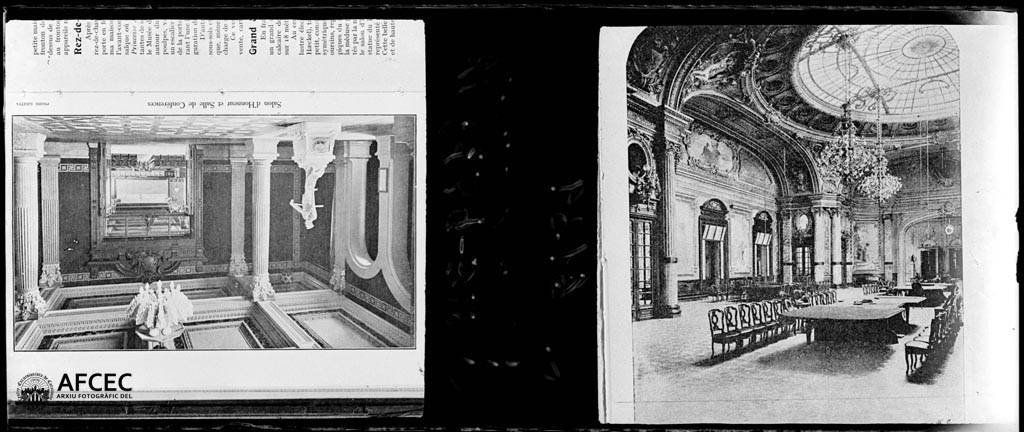
Comprehensive Guide to Visiting Musée Océanographique De Monaco, Monaco
Date: 16/08/2024
Introduction
The Musée Océanographique De Monaco, founded by Prince Albert I in 1910, stands as a monumental institution dedicated to marine science, oceanography, and conservation. Situated on the cliffs of Monaco and often referred to as a ‘temple dedicated to science and art,’ the museum is a testament to Monaco’s commitment to understanding and preserving marine ecosystems (Wikipedia). The museum’s rich history is intertwined with the pioneering oceanographic campaigns of Prince Albert I and the innovative contributions of Jacques-Yves Cousteau, who served as its director from 1957 to 1988 (Ocean Science History). Today, the museum continues to be a hub for marine research and education, offering visitors a comprehensive experience through its extensive exhibits, state-of-the-art aquariums, interactive programs, and panoramic views of the Mediterranean Sea. Whether you are a marine biology enthusiast, a history buff, or a casual visitor, the Musée Océanographique De Monaco provides an enriching and unforgettable experience.
Table of Contents
- [Exploring the Musée Océanographique De Monaco: History, Tickets, and Visitor Tips](#exploring-the-musée-océanographique-de-monaco-history-tickets-and-visitor-tipsexploring-the-musée-océanographique-de-monaco-history-tickets-and-visitor-tips)
- [History and Significance](#history-and-significancehistory-and-significance)
- [Founding and Early Years](#founding-and-early-yearsfounding-and-early-years)
- [Architectural Marvel](#architectural-marvelarchitectural-marvel)
- [Contributions of Jacques-Yves Cousteau](#contributions-of-jacques-yves-cousteaucontributions-of-jacques-yves-cousteau)
- [Modernization and Centenary Celebrations](#modernization-and-centenary-celebrationsmodernization-and-centenary-celebrations)
- [Educational and Cultural Impact](#educational-and-cultural-impacteducational-and-cultural-impact)
- [Practical Visitor Information](#practical-visitor-informationpractical-visitor-information)
- [Tickets and Visiting Hours](#tickets-and-visiting-hourstickets-and-visiting-hours)
- [How to Get There](#how-to-get-therehow-to-get-there)
- [Nearby Attractions and Special Events](#nearby-attractions-and-special-eventsnearby-attractions-and-special-events)
- [Photographic Spots](#photographic-spotsphotographic-spots)
- [FAQ Section](#faq-sectionfaq-section)
- [History and Significance](#history-and-significancehistory-and-significance)
Exploring the Musée Océanographique De Monaco: History, Tickets, and Visitor Tips
The Musée Océanographique De Monaco is not just a museum; it is a gateway to the fascinating world of marine science and oceanography. Founded by Prince Albert I, a pioneer in oceanographic research, this iconic institution offers visitors an in-depth look at the history of marine exploration, the beauty of underwater life, and the importance of ocean conservation. In this article, we’ll cover everything you need to know about visiting this extraordinary museum, including its history, ticket prices, visiting hours, and travel tips.
History and Significance
Founding and Early Years
The Musée Océanographique De Monaco was inaugurated on March 29, 1910, by Prince Albert I of Monaco, a pioneering figure in oceanographic research. Prince Albert I, often referred to as Monaco’s modernist reformer, envisioned the museum as a “temple dedicated to science and art.” The inauguration ceremony was a grand affair, attended by high officials, celebrities, and leading oceanographers of the day. This event marked the beginning of a significant institution dedicated to the study and preservation of marine life.
Prince Albert I’s dedication to oceanography was not merely a hobby but a serious scientific endeavor. He conducted 28 oceanographic campaigns and utilized several research vessels, including the Hirondelle, Princesse-Alice, and Hirondelle II. The names of these vessels are inscribed on the museum’s façade, symbolizing the prince’s commitment to marine science (Ocean Science History).
Architectural Marvel
The museum itself is an architectural masterpiece, clinging to a cliff face over the Mediterranean Sea. It took eleven years to build, using 100,000 tons of stone from La Turbie. The building’s ornate façade is a monumental example of Baroque Revival architecture, towering 279 feet above the sea. The façade is adorned with the names of twenty well-known oceanographic research vessels, personally selected by Prince Albert I (Wikipedia).
Contributions of Jacques-Yves Cousteau
One of the most notable figures associated with the museum is Jacques-Yves Cousteau, who served as its director from 1957 to 1988. Cousteau’s tenure marked a period of significant advancements in marine science and public engagement. Under his leadership, the museum expanded its exhibits and educational programs, making it a global center for marine research and conservation (Ocean Science History).
Modernization and Centenary Celebrations
The museum celebrated its centenary in March 2010, following extensive renovations. These updates modernized the exhibits to appeal to contemporary tourists while preserving the historical significance of the collections. The lower floors of the museum are dedicated to aquariums, featuring over 4,000 species of fish and 200 families of invertebrates. Special exhibits, such as “Sharks: The Expo Sensation,” include interactive elements like touch tanks, allowing visitors to engage directly with marine life (Wikipedia).
Educational and Cultural Impact
The museum is not just a repository of marine specimens but also a center for education and cultural exchange. It hosts numerous temporary and permanent exhibitions, including contemporary art displays by artists like Damien Hirst and Philippe Pasqua. These exhibitions aim to raise awareness about marine conservation and the impact of human activities on ocean ecosystems (Visit Monaco).
Practical Visitor Information
Tickets and Visiting Hours
The museum is open every day except Christmas Day and the Formula 1 Grand Prix weekend. Regular opening hours are from 10:00 AM to 6:00 PM, but these can vary seasonally. Ticket prices are as follows:
- Adults: €16
- Children (4-12 years): €10
- Students: €12
- Seniors: €14
Visitors can purchase tickets on-site or online for convenience (Musée Océanographique).
How to Get There
The museum is easily accessible by various modes of transportation. Visitors can reach the museum by train, car, bus, or on foot. The Pêcheurs car park, located under the museum, provides convenient parking with elevators and escalators leading directly to the main entrance. The museum is also equipped with facilities to accommodate visitors with disabilities, ensuring an inclusive experience for all (Musée Océanographique).
Nearby Attractions and Special Events
While visiting the museum, guests can also explore other nearby attractions in Monaco, such as the Prince’s Palace, the Exotic Garden, and the Monte Carlo Casino. The museum frequently hosts special events, including guided tours, educational workshops, and seasonal exhibitions.
Photographic Spots
The museum’s location offers stunning views of the Mediterranean Sea, making it a perfect spot for photography. The outdoor terrace and various viewpoints within the museum provide excellent opportunities for capturing memorable moments.
FAQ Section
What are the visiting hours for Musée Océanographique De Monaco?
The museum is open from 10:00 AM to 6:00 PM, but hours may vary seasonally.
How much are tickets for Musée Océanographique De Monaco?
Ticket prices are €16 for adults, €10 for children (4-12 years), €12 for students, and €14 for seniors.
Are there guided tours available?
Yes, the museum offers guided tours that provide in-depth information about the exhibits and the history of the museum.
What are some nearby attractions?
Nearby attractions include the Prince’s Palace, the Exotic Garden, and the Monte Carlo Casino.
Conclusion
The Musée Océanographique De Monaco is more than just a museum; it is a beacon of marine science, conservation, and education. From its historic roots founded by Prince Albert I to the transformative leadership of Jacques-Yves Cousteau, the museum has evolved into a world-renowned institution that attracts visitors of all ages and backgrounds. Its modern exhibits, immersive programs, and breathtaking architecture make it a must-visit attraction in Monaco. The museum not only preserves the history of oceanography but also inspires future generations to engage in marine conservation efforts. With its comprehensive educational programs, interactive exhibits, and stunning views, the Musée Océanographique De Monaco offers a unique blend of learning and leisure, making it an essential part of any trip to Monaco. Plan your visit today and dive into the wonders of the marine world (Musée Océanographique).
References
- Wikipedia. (n.d.). Oceanographic Museum of Monaco. Retrieved from Wikipedia
- Ocean Science History. (2013, July 21). A Visit to Musée Océanographique de Monaco. Retrieved from Ocean Science History
- Visit Monaco. (n.d.). Oceanographic Museum of Monaco. Retrieved from Visit Monaco
- Musée Océanographique. (n.d.). Practical Info. Retrieved from Musée Océanographique
- Monte Carlo Living. (2024, August 17). Events of the Weekend of August 17th and 18th, 2024 in Monaco. Retrieved from Monte Carlo Living
- PlanetWare. (n.d.). Tourist Attractions in Monaco. Retrieved from PlanetWare
